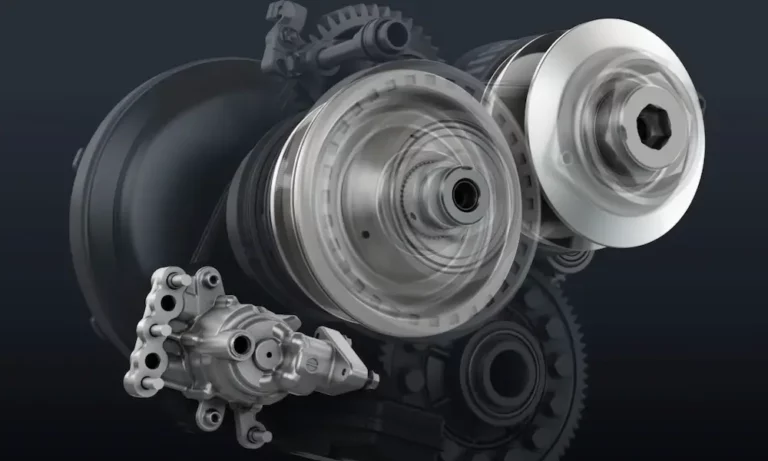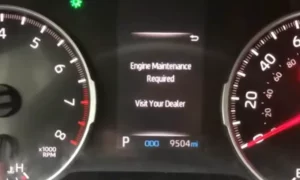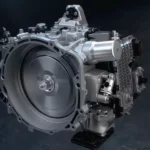Toyota’s continuously variable transmission (CVT) can be a real game-changer for smooth driving, but it’s not without its hiccups. Common Toyota CVT transmission problems include overheating, slipping, and unusual noises. Understanding these can help you maintain your vehicle and avoid surprises on the road. Dive into these issues and explore solutions so you can keep your Toyota running smoothly and efficiently.
Common Symptoms of CVT Problems
When your Toyota’s CVT system starts acting up, a few warning signs often pop up. Keep an eye out for dashboard alerts and notice any changes in driving feel. Issues can include acceleration problems, unexpected jerks or shakes, and strange noises, all of which could mean a trip to the mechanic is in order.
Check Engine Light and Dashboard Warnings
The check engine light isn’t just there for decoration. It lights up when the car’s computer senses something wrong. For CVT issues, this might mean that sensors are picking up abnormal signals. Dashboard warnings can help you catch problems early and may indicate overheating or transmission control module issues. Ignoring these warnings can lead you to more severe problems.
Pay attention if your dashboard shows warnings related to the transmission. It could be a sign of fluid leaks or issues with the car’s control module. A quick diagnostic check at a workshop could save you from costly repairs later on.
Loss of Acceleration and Delayed Engagement
Notice if your car doesn’t pick up speed like it used to. Loss of acceleration is a common symptom indicating your CVT is struggling. This can make merging onto highways or just driving uphill more dangerous. Delayed engagement means you step on the gas, but the car hesitates.
Both symptoms can stem from worn-out belts or pulley systems inside the CVT. Sometimes the cause might be something simple like low transmission fluid. Frequent checks and timely fluid replacements can often prevent these issues.
Jerking, Shuddering, and Slipping Gears
Feeling unexpected jerks or shudders while driving isn’t normal. Jerking motions can be signs of uneven power delivery from the transmission. Shuddering often points to internal CVT issues, such as misaligned pulleys or worn-out rubber belts, causing uneven gear shifts.
Slipping gears mean your vehicle might suddenly lose power or speed without any change in pedal pressure. These problems can often be traced back to transmission fluid needing a change or more serious internal damage. Immediate attention is needed to avoid worsening these conditions.
Rattling Noises and Delayed Motion
Strange noises like rattling or knocking can mean internal components of your CVT aren’t functioning well. These noises are usually the loudest when you start the car or accelerate. They may suggest parts inside the transmission are loose or worn.
Delayed motion happens if you press the accelerator pedal, but the car takes a moment to respond. This delay can occur due to CVT belt slippage or issues with internal pressure. Getting these noises and motions checked out quickly can help prevent more significant issues down the road.
Issues Specific to Toyota Models
When it comes to Toyota models with CVT transmissions, there are certain issues you might encounter. These include specific concerns with popular models like the Toyota Corolla and Camry. There are also noteworthy challenges associated with the SE Model and particularly the 2020 Corolla.
Toyota Corolla and Camry Transmission Concerns
Toyota Corolla: Drivers have reported problems with the CVT, such as slipping during gear changes. This can cause inconsistent acceleration and may lead you to notice unusual whining noises. The transmission might struggle, especially under quick acceleration, resulting in a less smooth ride.
Toyota Camry: Some issues you might encounter include lurching or hesitating when shifting from park to drive. This is often due to delays in the transmission engaging. If you experience a burnt odor, it might indicate the transmission fluid is overheating, which needs immediate attention.
Challenges with the SE Model and 2020 Corolla
SE Model: For the SE Model, early wear of the CVT belt is a common complaint. You might notice jerking movements while driving, which can be uncomfortable. The CVT’s mechanical components can wear out faster if the car is driven aggressively.
2020 Toyota Corolla: This model has shown specific transmission challenges. Its CVT may suffer from a delay in throttle response, making it feel less responsive than expected. If the check engine light turns on, it’s crucial to have your car checked, as it could be connected to transmission faults. Regular maintenance and fluid checks can help mitigate some of these issues, ensuring a smoother driving experience.
Addressing and Troubleshooting CVT Problems
When dealing with Toyota CVT transmission issues, it is vital to identify the root causes. Some common problems include malfunctioning control modules, clutch issues, fluid leaks, and coolant problems. Taking timely action can prevent more significant damage.
Control Module and Clutch Issues
When your Toyota experiences transmission troubles, the control module can be a culprit. This electronic component regulates gear shifting. If it malfunctions, you may notice delays or irregular shifting. In such cases, the car might activate the check engine light to signal issues.
Clutch problems are another critical area. The CVT clutch is responsible for smooth acceleration. If worn out, your vehicle might jerk or accelerate poorly. Regular checks can help ensure these parts are in good condition. To resolve problems, consider visiting a certified mechanic for an accurate diagnosis and repair.
Fluid Leaks and Coolant Challenges
Detecting fluid leaks early is crucial. If the transmission fluid leaks, your car can become less efficient and cause overheating issues. Look for red or brown puddles under your car, a clear sign of transmission fluid leaks.
Coolant leaks are another concern. A faulty cooling system can lead to overheating, affecting the overall transmission. Check the coolant levels regularly to avoid overheating issues. To address such leaks, ensure that the seals, hoses, and containers are intact and not worn out.
Regular maintenance checks for fluid levels and coolants can help avoid severe CVT transmission problems.
Maintenance Tips for Toyota CVT
Keeping your Toyota CVT in good condition involves regular maintenance and attention to specific areas. Focusing on fluid checks and preventing overheating or overloading is key to maintaining transmission performance.
Regular Maintenance and CVT Fluid Checks
Regular maintenance is crucial for your Toyota CVT. Checking your CVT fluid levels is a simple way to start. Make sure the fluid is at the recommended level. Low fluid can lead to overheating and slipping, which might cause larger issues later on. It’s also important to use the correct type of CVT fluid. Using the wrong kind can damage the transmission.
Inspect your CVT fluid for discoloration or a burnt smell. If you notice discoloration or a burnt odor, it might be time for a change. Regularly scheduled maintenance with a professional can help ensure everything is in top shape. They can also help with diagnosing any potential issues early on.
Preventing Overheating and Overloading
Preventing overheating in your Toyota CVT is essential. Avoid pushing your vehicle beyond its limits. Overloading your car can strain the transmission and cause it to overheat. If you frequently carry heavy loads or drive in stop-and-go traffic, consider installing an auxiliary cooler.
Keep an eye on the temperature gauge in your vehicle. If it starts to rise, it may be a sign of trouble. Ensure your engine’s cooling system is working properly, as this plays a role in keeping your transmission cool. Parking your car in shaded areas or using sunshades can also help reduce heat buildup when not driving. Regularly monitoring these factors can extend the life of your Toyota CVT.
Costs and Considerations for CVT Repairs
Repairing a Toyota CVT transmission can be costly and involves careful decision-making. You’ll need to consider whether it’s worth the cost to fix it or replace it entirely, depending on the extent of the problem.
Evaluating Repair Cost and Transmission Trouble
When evaluating repair costs for your CVT transmission, it’s essential to understand the specific issues you’re facing. Common problems like fluid leaks can cost around $3,000, while shuddering or shaking might run up to $3,500. Regular maintenance and inspections are crucial to catch these problems early and manage costs effectively.
If you’re experiencing transmission troubles, addressing them promptly can save you money in the long run. Keep in mind that driving conditions and habits significantly affect how often you might need repairs, so it’s important to follow recommended guidelines for fluid changes and servicing.
Dealing with Complete Transmission Failure
Facing a complete transmission failure is a more serious and costly situation. If your transmission needs a full replacement, it can be quite expensive. Repair attempts might be substantial; some owners have reported spending up to $1,800 on repairs that don’t last.
If your transmission can’t be saved, you may need a full replacement, which could be costly. Some repairs might not guarantee long-term results. In such cases, replacing damaged parts like the TCM might cost between $750 and $808. Whether to repair or replace often depends on the age and mileage of your vehicle, as well as your budget for potential recurring issues.














